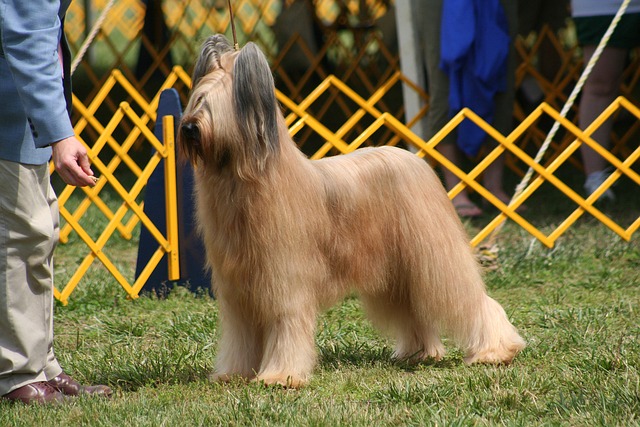


The Briard is a large and versatile herding dog, known for its loyalty, intelligence, and distinctive long, flowing coat. Originally bred in France to herd and protect livestock, the Briard is a highly capable working dog and a devoted family companion. This breed is alert, courageous, and protective, making it an excellent choice for families and individuals looking for a strong, dependable dog. Briards are also highly trainable and excel in various dog sports, obedience, and as service dogs. Despite their somewhat intimidating appearance, they are gentle and affectionate with their loved ones.
The Briard's history dates back over a thousand years, with the breed being used in France for herding sheep and guarding flocks. Briards are believed to be descendants of ancient herding dogs that were brought to France by the Celts. Over time, the Briard became a prized working dog in rural France, known for its ability to herd and protect livestock from predators. The breed was officially recognized in France in the 19th century, and its popularity spread across Europe and the United States. Today, Briards are still used as working dogs, but they are also beloved as companion animals. The breed was officially recognized by the American Kennel Club (AKC) in 1928.
The Briard is a large and strong dog, with males typically weighing between 60 and 100 pounds, while females are slightly smaller, weighing between 50 and 80 pounds. They have a long, dense double coat that is typically black, tawny, or grey, with a slightly wavy or straight texture. The coat requires regular grooming to prevent matting and maintain its healthy appearance. Briards have a broad head with a pronounced stop, dark eyes, and large, expressive ears. Their muscular bodies are well-suited for herding and working in tough environments. The breed's tail is long and typically carried low or with a slight upward curve when relaxed.
Briards are known for their loyalty, intelligence, and protective nature. They are devoted to their families and can be very affectionate with their loved ones, including children. While they are naturally protective and will guard their home and family, they are not typically aggressive unless provoked. Briards are known to be highly alert and can be reserved around strangers, but they are generally good with other pets and animals, especially when socialized early. The breed’s strong herding instincts can sometimes lead them to try to herd children, other pets, or even adults, so they require proper training and guidance to manage these instincts.
The Briard is an active and energetic dog that requires a significant amount of exercise to stay happy and healthy. They enjoy long walks, runs, and playing in a secure yard. Briards also excel in dog sports, such as agility, obedience, and herding trials, where their natural skills can be put to use. This breed thrives in an active household where they can engage in physical and mental activities. Daily exercise is important to prevent boredom and ensure they do not develop undesirable behaviors. Due to their intelligence and energy levels, Briards need consistent mental stimulation in addition to physical activity.
Briards are highly intelligent and eager to please, making them relatively easy to train. However, they can also be independent and stubborn at times, so early training is essential to establish a strong bond and leadership. Positive reinforcement techniques, such as treats, praise, and play, work best with this breed. Briards are quick learners but may test boundaries, so it is important for owners to be firm and consistent in training. Early socialization is also critical to help them become well-adjusted to new people, animals, and environments. Well-socialized Briards tend to be more balanced, confident, and calm in various situations.
The Briard is generally a healthy breed, but like all dogs, they are prone to certain health conditions. Some common health concerns for Briards include hip dysplasia, cataracts, and progressive retinal atrophy (PRA). Regular vet visits, a healthy diet, and routine exercise can help prevent or manage these conditions. Their long coat requires regular grooming to prevent matting and tangling, typically once or twice a week, and more frequently during shedding seasons. It is also important to keep their ears clean to avoid infections. Additionally, because Briards are a large breed, they can be prone to bloat (gastric torsion), so it is important to feed them smaller meals throughout the day rather than one large meal.
The average lifespan of a Briard is typically between 10 and 12 years. With proper care, including a balanced diet, regular exercise, and routine vet check-ups, many Briards live long, healthy lives. Like all dogs, their lifespan can be influenced by genetics, health care, and the quality of life they receive, so it’s important to maintain a healthy lifestyle for them throughout their lives.
© copyright Dog Compendium 2024 - 2025